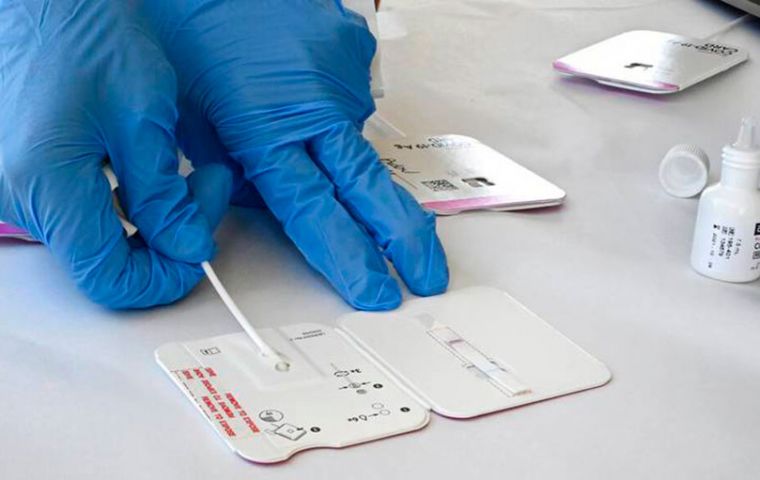MercoPress. South Atlantic News Agency
Scientists now watching “recombinant” lineages of SARS-CoV-2
 As with other kinds of variants, most will die off relatively quickly, Hopkins said.
As with other kinds of variants, most will die off relatively quickly, Hopkins said. As cases of COVID-19 worldwide are waning down and more so are the disease's deadly effects, scientists worldwide are beginning to harbor new concerns over the appearance and spread of the so-called recombinant lineages of the SARS-CoV-2 Omicron variant.
Britain’s Health Security Agency is already monitoring three of those such lineages: XD, XE, and XF, it was reported.
Meanwhile, scientists in several countries have identified hybrid variants of the Delta and Omicron, in addition to one recombinant variant of sublineages of Omicron, which has shown early signs of being even more transmissible than the parent variants.
XD is the hybrid of Delta and BA.1, a sublineage of the Omicron variant, and has been found mostly in France, Denmark and Belgium. XE is recombinant of two sublineages of the Omicron variants, BA.1 and BA.2, but it has three mutations that are not present in their parent sequences. And XF is the recombinant between Delta and BA.1.
Virologist Tom Peacock from Imperial College London said XD was the recombinant to watch because of its spread into multiple countries and its inclusion of Delta, a variant that causes more severe clinical outcomes. “The concern would be if there are non-structural changes in Delta that contribute to [the] severity [of the case] and/or cell replication,” he tweeted.
By March 22, the HSA had identified 637 XE cases across England and increasing in number, which indicated community spread. The agency compared genome samples of the BA.2 subvariant of Omicron and found that XE was 9.8% more transmissible. The agency cautioned data might be biased in the early stages and the growth rate would converge towards an estimate of its inherent transmissibility over time.
HSA's chief medical adviser Professor Susan Hopkins said XE had shown a variable growth rate but added that “so far there is not enough evidence to draw conclusions about transmissibility, severity or vaccine effectiveness.”
So far, only 39 sequences of the XF hybrid variant have been identified and only in Britain. The first was registered Jan. 7, and no samples have been found since February 14. The agency concluded that XF was unlikely to be associated with sustained community growth.
Two related viruses infecting the same cell can result in a mixed genome, scientists have explained. Genomic recombination between the Delta and Alpha variants had been reported in 26 cases in Japan and between the Alpha variant and B.1.177 in Spain in the summer of 2020.
Hopkins also pointed out recombinant variants were not unusual, particularly when there were several variants in circulation. “Several have been identified over the course of the pandemic to date. As with other kinds of variants, most will die off relatively quickly,” she said.
Regarding vaccination in light of the new appearances, an advisor to the Italian Health Ministry had warned that two doses of vaccine against COVID 19 ”may not be enough“ against XE.
”The new XE variant seems to be more contagious and a person who today has two doses is practically not vaccinated,“ Walter Ricciardi said in a radio interview.
The new variant does not appear to be more lethal, although it is more contagious, so tests are focused on preventing a new wave of infections. ”At the moment, Great Britain has a 20-hour wait for an ambulance, they say they can't give answers neither in emergency nor in choice,“ Ricciardi pointed out.
Delving into the impact on vaccinated people, Ricciardi emphasized that ”the virus also infects vaccinated people, especially those who have not had the booster.“
”This disease does not grant permanent immunity, even a recovered person can be re-infected,“ he insisted. In Italy, up to 4% of people are.
”We have to prepare ourselves mentally for a long-lasting battle that does not end with the legal emergency: vaccinations, green passes, masks, and prudent behaviors must be maintained,” Ricciardi stressed.




Top Comments
Disclaimer & comment rulesCommenting for this story is now closed.
If you have a Facebook account, become a fan and comment on our Facebook Page!